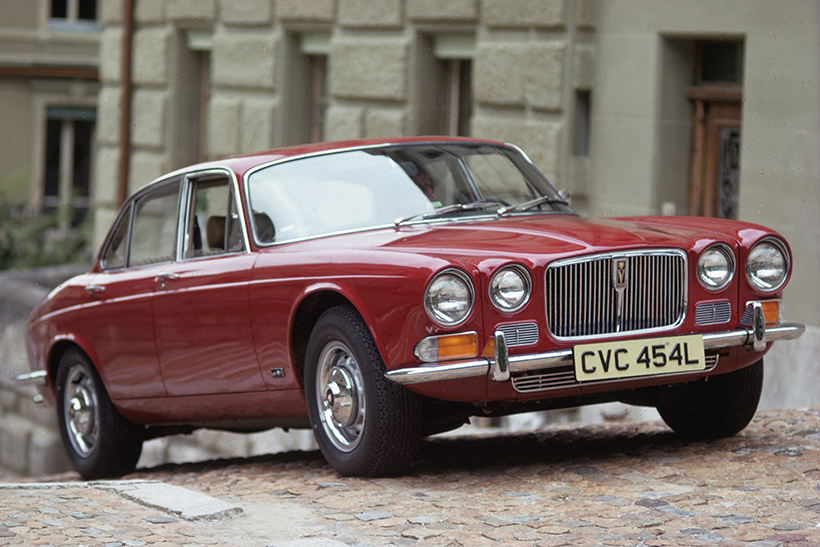As the biggest Jaguar celebrates its half-century, Classics World’s Paul Wager considers its nine generations…
“I believe that by the time 1968 draws to a close, you will agree that it has been Jaguar’s year,” stated the normally understated William Lyons in June 1968 and on September 26, the reason for his upbeat comment became obvious when the wraps came off the all-new Jaguar project XJ4 – the car we know today as the XJ. In an unusual departure, Lyons himself appeared in the early press advertising, with the bold claim “I believe the XJ6 is the finest saloon car Jaguar have ever made and one that challenges comparison with any in the world”.
At launch, it did have a good claim to the title of best car in the world, offering a unique combination of pace, refinement and handling. The impressive thing was that there was no single element of the new XJ which was in itself brand new, yet it combined everything the firm had learned up to that point to good effect.
In short order, the new car made the rest of the range pretty much obsolete, but in reality the Jaguar line-up at the time was something of a jumble. The entry-level was the 240/340, essentially a rebadged Mk2. Itself an evolution of the Mk1, the Mk2’s basic design dated from 1957 and to counter criticism of its now old-fashioned underpinnings, had been used as the basis for the S-Type in 1963, created basically by grafting the new independent rear end on to the Mk2 with the rear body styling modified to suit. Meanwhile, the top end of the range was served by the big MkX which had replaced the old separate-chassis MkVII and MkIX cars and was in many ways a showcase for Jaguar technology with IRS, tripled-carbed XK motor and a new monocoque bodyshell. Renamed 420G in 1966, it was a well regarded design but sold in increasingly smaller numbers as the market for such big cars started to slow.
The answer was to add yet another model to the range, offering the sophistication of the MkX with the compact dimensions of the S-Type and rather confusingly, it was given the name 420. The 420 was in production for just a couple of years and with hindsight it’s obvious that it was a kind of tentative market proving exercise for the later XJ, which by then was well into development.
Using the 4.2-litre XK engine in conjunction with the independent rear suspension and a new body style using the MkX’s four-lamp front end, the 420 was a cross between a facelifted S-Type and a shrunken MkX.
It was destined to enjoy a short life, though, with production ceasing shortly before the XJ launch. The Mk2 was axed the following year and the MkX disappeared in 1970; the new car having eaten into its sales. The XJ would go on to support Jaguar through some pretty dark times and indeed is still with us.
Today’s car is in fact the eighth generation, the XJ having gone from straight-six and V12 to supercharged V8 and from steel to aluminium architecture along the way.
If you missed out on the E-Type when they could be had for the value of a nicer MGB, then now’s the time to grab an early XJ – which it could be argued is more significant to Jaguar’s history than any of its sports cars. Here’s the full story:
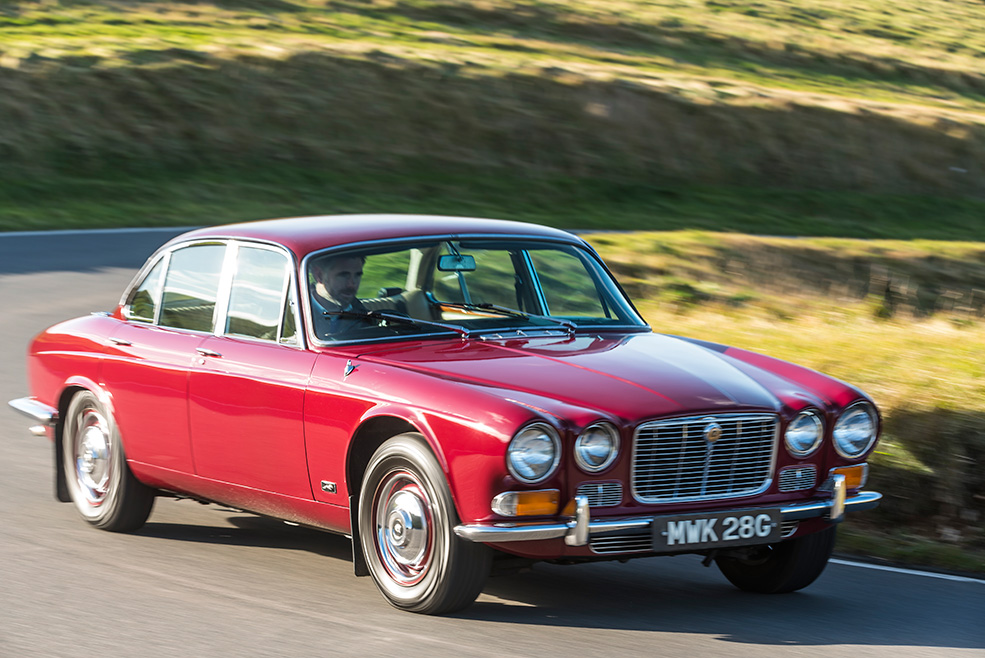

Jaguar XJ Series 1: 1968-1973
Rather unbelievably, work had begun as early as 1961 around the concept of a stretched E-Type but that’s perhaps not as absurd as it seems, since the E-Type was at the time the firm’s most modern offering and Jaguar thinking at the time had been along the lines of adding a four-door sports car to the range.
Archive photos of the ‘four-door E-Type’ are fascinating but by 1963 the styling had evolved into a rather more conventional saloon, closer in appearance to that which would appear in production form.
Codenamed XJ4, the new car would prove revolutionary, a coming together of all Jaguar’s engineering development to that point and a careful attention to detail which made the car so attractive. Taking the best bits of the rest of the range, the bodyshell construction benefited from the experience gained with several generations of monocoque construction, while the XK engine was well developed and the suspension had been well proven in the E-Type and MkX.
The first running prototypes were completed by May 1966 – an important date since in the background Lyons had been negotiating the merger with BMC and the proposed new model would have been an important bargaining tool.
Despite this, development was a slow process, the delay in engineering the body meaning Jaguar was obliged to meet penalty payments to Pressed Steel Fisher for running three months behind on the programme.
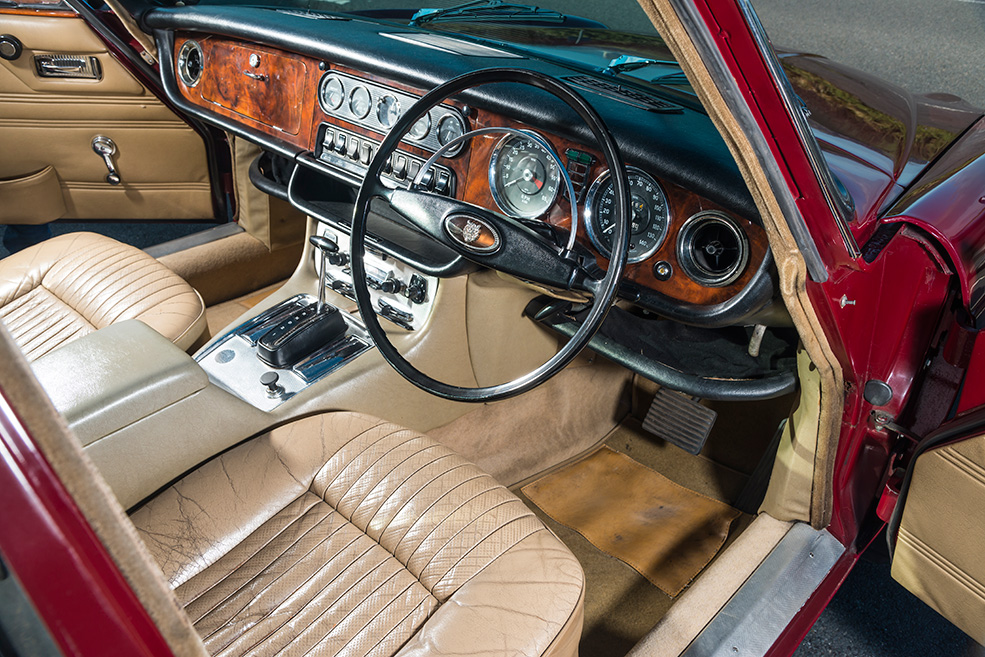
When launched in September 1968, the V12 engine wasn’t quite ready but as it happened, that didn’t hamper the reaction to the new car and a waiting list immediately developed.
At launch the range included just the straight-six XK engine, in 2.8 or 4.2-litre forms, with the car offered as standard with a 109-inch wheelbase and an optional long-wheelbase model at 113 inches. Priced at £1797 for the ‘entry level’ 2.8 to £2398 for the 4.2-litre range-topper, the XJ was astounding value compared to the Mercedes 280SE – the first of the S-Class cars – and the top-end BMW 2800, both of which cost some £1000 more.
In 1971, the long-awaited V12 was finally unveiled in the E-Type, becoming available in the XJ saloon –now badged XJ12 – from 1972. Developed by Walter Hassan who had returned to Jaguar with its purchase of Coventry Climax, the 5.3-litre engine was the smoothest in the industry and immediately gave Jaguar a unique selling point for its new car.
A V8 engine had also been proposed for the new car, but development issues had prevented it from being readied by the launch date. In his autobiography, Hassan points out that the problems largely stemmed from the need to ensure commonality with the existing V12 design, which imposed a 60-degree vee angle on the design. For a V8 engine the preferred angle is 90 degrees and tricky secondary vibration issues ultimately saw it dropped.
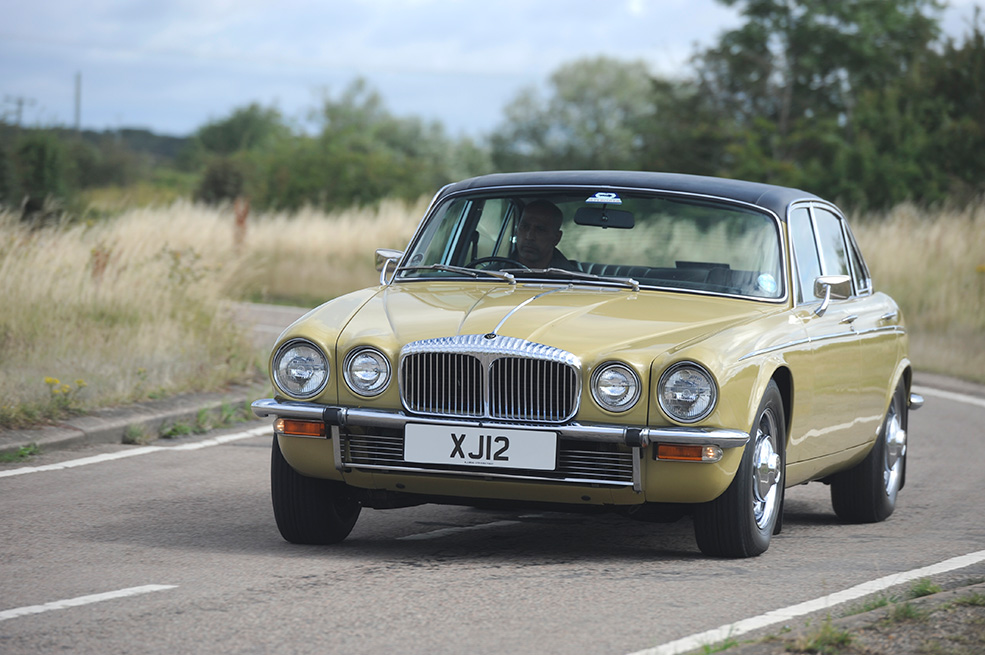
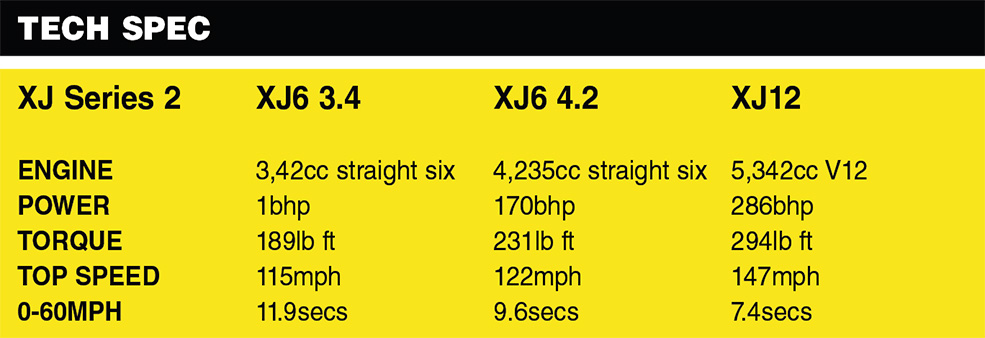
Jaguar XJ Series 2: 1973-1979
The original XJ was evolved into the series 2, unveiled in September 1973 with styling changes driven by the need to raise the bumper height to satisfy US legislation, achieved by using a shallower grille with the space below the bumper taken up by additional intakes.
At the same time, the slow-selling 2.8 option was dropped, while the V12 engine was now available only in the longer-wheelbase model. The 4.2-litre XK was also revised to produce 170bhp at 4500 rpm.

The opportunity was also taken to incorporate many other detail improvements to the car, including trim and electrical upgrades but Jaguar was entering a dark age as a part of British Leyland and quality was really beginning to suffer.
Quality issues apart, the Series 2 XJ was technically an improvement to the original and when the 3.4-litre XK engine was added in 1975, the firm had a three-model range to offer. Fuel injection was added to the V12 in the same year, as found in the newly-launched XJ-S .
In September 1974 the short-wheelbase saloon was dropped from the range, the long-wheelbase car now becoming the standard offering.
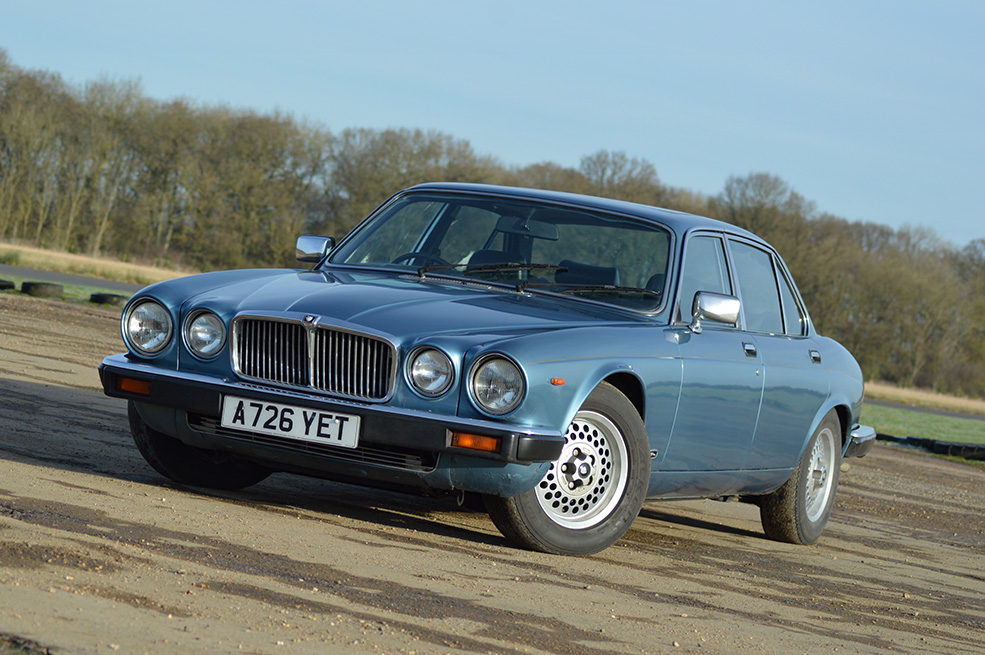
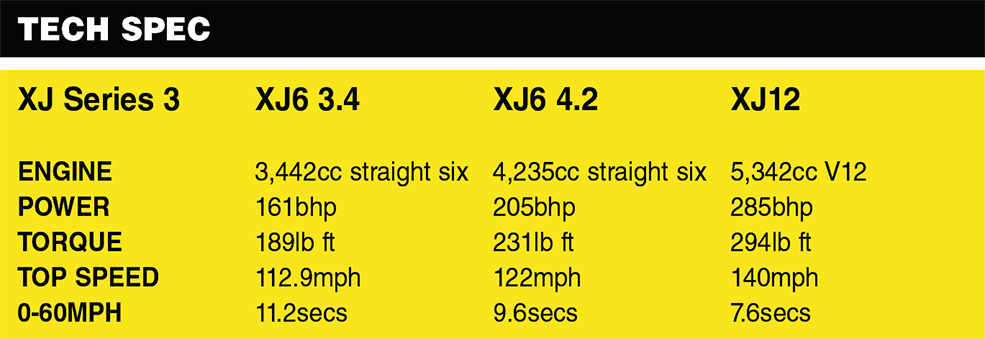
Jaguar XJ Series 3: 1979-1992
With a brief to extend the life of the original design for long enough for the XJ40 development programme to reach conclusion, Pininfarina achieved a rare trick here of taking a Lyons design and improving it.
The work was incredibly subtle but very significant and managed the make the car look longer and sleeker whilst actually raising the rear roofline to create more interior space. An enlarged glass area reinforced the sense of roominess and the interior was suitably modernised too.
Engine options were carried over from the series 2, with the 4.2 gaining fuel injection and both six-cylinder cars now offered with the LT77 five-speed manual box as an option.
Quality however, was still a major issue but in April 1980 John Egan arrived at Browns Lane as the new Chief Executive of Jaguar. Ironically, he had to pass through a picket line on his first day at the office, but quickly got to grips with the many issues crippling the firm.
His most significant achievement was to bring the Castle Bromwich plant under Jaguar control, in order to improve the quality of the finished bodyshells being supplied to the assembly plant at Browns Lane.
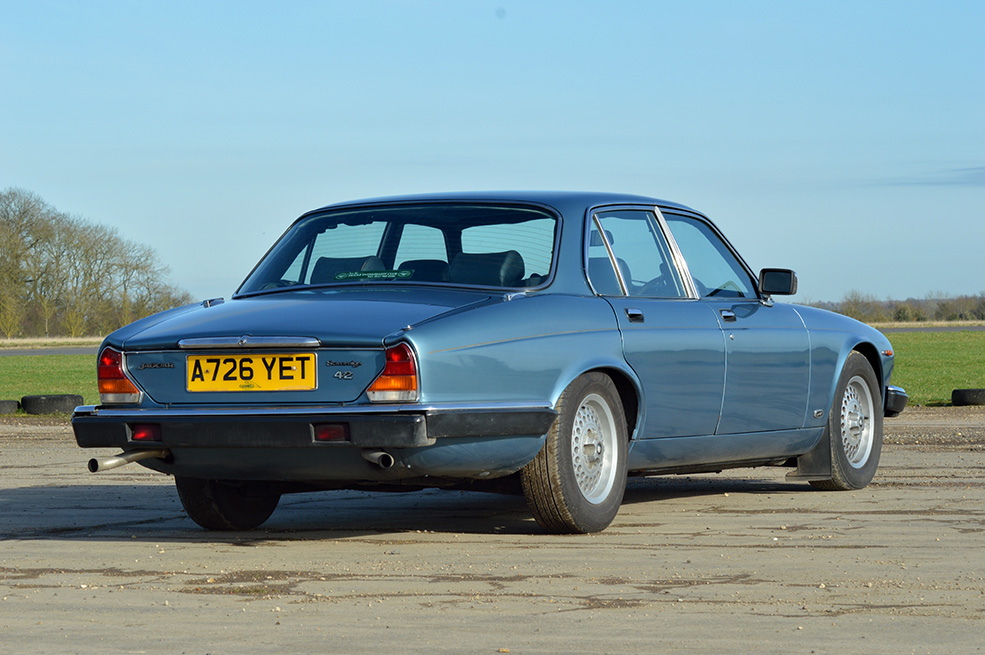
In his autobiography Saving Jaguar, Sir John Egan relates how Lyons’ decision to go with cheaper body tooling meant that much lead-loading and hand filling of the bodyshells was required, especially around the hooded headlights. This would have worked well if it hadn’t been for the new high-temperature paint process installed at Castle Bromwich which had the unfortunate effect of melting the lead filler…
Alongside this, Egan also established a system making third-party component suppliers take responsibility for the quality of their products and slowly but surely the quality of the cars began to improve.
The Series 3 ended up being the longest-lived of all the XJ generations, with the car lasting in production until 1992, living on as a special order model to satisfy customers who were waiting for the V12 to be made available in the XJ40.


Jaguar XJ40: 1986-1994
The XJ40 should really have been the series 3, but development stretched so long beyond the original brief that an additional model was required to fill the gap.
Engineering delays were the primary cause, but allied to these was the corporate position of Jaguar at the time, which was in the queue for privatisation from BL along with Land Rover. Egan recounts that the firm simply didn’t have the resources to concentrate on a stock market flotation as well as such a critical launch and so decided to dispense with the flotation first simply because it was “relatively easy”.
The XJ40 finally saw the light of day in 1986 after a development programme which had first begun as early as 1973 but had been delayed when funds were diverted to prop up the failing volume cars business of BL. The project was picked up again in 1979 and with input from the now retired Lyons, the body was finalised by February 1980.
With Egan on board, development was accelerated and the new car was to be thoroughly modern in terms of its electrical architecture and choice of running gear, with long-serving XJ engine sidelined in favour of the new AJ6 design. Crucially, it was also an opportunity to lay to rest some of the quality demons, featuring 20 per cent fewer body panels, which would in turn allow for better quality, improved panel fit and easier assembly.
The chassis was also redeveloped for the first time since the launch of the original XJ. At the front, the double wishbone layout was retained but the control arms faced rearwards instead of forwards to allow them to be anchored to a stiffer part of the bodyshell and better locate the subframe. At the rear, the traditional Jaguar IRS was reworked to adopt a pendulum system which allowed fore and aft movement of the lower wishbone’s inner fulcrum but retain its lateral stiffness.
The XJ40 enjoyed more extensive durability testing than any previous model with cold/hot climate testing and high-speed runs at the Nardo track, together with work at MIRA and Gaydon.
Egan recounts the launch of the new car requiring major components to survive 100,000 miles before being signed off, with the car only being ready for launch when the top 100 managers in the company were happy to go ahead. A last-minute suggestion by test driver Norman Dewis involved an additional six months’ final tuning but in June 1986 production began, with the car launched in the UK shortly afterwards and the USA six months later.
So why did the XJ40 gain its unfortunate reputation for unreliability? The answer, Egan admits is that the demand for the new car encouraged the firm to hire more staff and increase production beyond what was prudent.
In truth, many problems were niggling rather than fundamental: one example Egan lists is that the camouflaging on the prototypes concealed problems with water leaks which only surfaced on production cars. A recovery programme was quickly instigated and quality rapidly improved, with Jaguar selling over 50,000 cars for the first time in 1988.
As launched, the XJ40 was offered with the new AJ6 engine in the 3.6-litre form as found in the XJ-S and also a new entry-level 2.9-litre version, later revised to 3.2 litres in 1989, with the 3.6 replaced by the 4-litre in 1990. Popular rumour states that while Jaguar was part of BL, the engineering team deliberately placed the crumple-zone ‘crash tubes’ of the car’s bodywork too close together to permit the Rover V8 to be installed in the car, but another even more amusing rumour suggests that Jaguar’s then chief engineer Jim Randle simply told the BL board the ex-Buick motor wouldn’t fit and nobody thought to measure it up. Whatever the truth of the matter, Jaguar’s own V12 wouldn’t fit either, with a significant re-engineering of the structure being required.
This proved a blessing in disguise, since by then Jaguar was in the hands of Ford and the reworking of the XJ40 in 1992 produced a much improved product with the number of body panels reduced further and quality again improved. The XJ12 incarnation of the XJ40 (technically the XJ81) was launched in 1993, although it was destined to be a slow seller, the six-cylinder cars having caught up somewhat in the refinement and performance stakes.


Jaguar X300: 1994-1997
The XJ40’s replacement was originally to be the XJ90, new design chief Geoff Lawson’s idea of what the XJ40 should have looked like if only its design hadn’t been frozen some six years before its launch. All concerned apparently felt that the car needed more traditional Jaguar design cues such as the four round lights, an angled bootlid opening and more sculpted front end style.
Once the Ford men arrived in Coventry and realised just how much investment was required to bring the outdated production facilities up to scratch though, the XJ90 programme was unceremoniously cancelled.
Instead, that £35m investment in updating the XJ40 structure was put to good use by using the central structure of the existing model together with a front and rear restyle which added back the missing Jaguar character. Add a partial interior redesign and the resulting X300 was a neat piece of work.
The AJ6 engine was upgraded at the same time to become the AJ16, with revised head porting, revised cam profiles, and higher compression, being available in either 3.2- or 4-litre guises, plus the V12 which was now at 6 litres.
Launched in 1994, the X300 is often referred to as ‘the car the XJ40 should have been’. Indeed one thing Ford did know a thing or two about was volume production and anybody who has worked on an X300 will realise that the quality of trim and fixings is far improved over the older car.
The X300 was on sale for the shortest period of all the XJs at just three years, but was a great success, lifting Jaguar back into contention in the executive class with a car for which no excuses needed to be made.

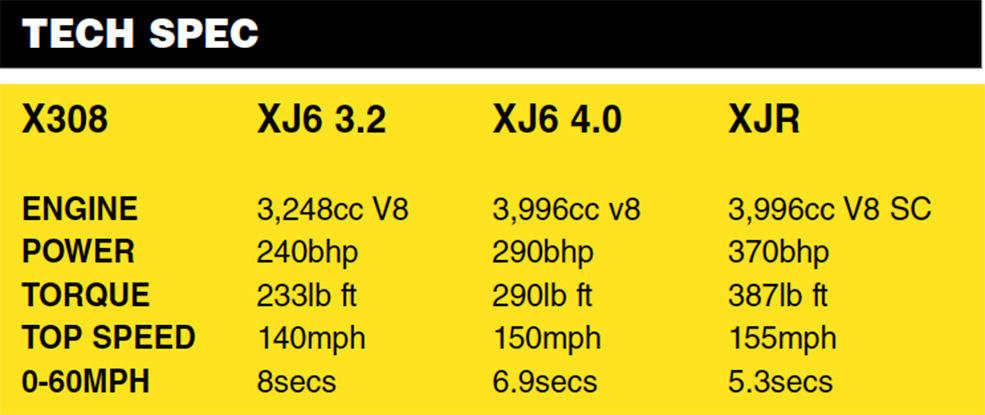
Jaguar X308: 1997-2002
Successful as it was, the X300 was now hampered in the market by its reliance on the six-cylinder engines when BMW and Mercedes could both offer V8 power… as could upstart brand Lexus which was making huge inroads on the US market.
The solution was a further evolution of that XJ40-derived platform to create the car known as the X308. Almost identical on the outside, the big change was the adoption of the new V8 engine designed for the XK8, while the car’s interior was treated to a complete overhaul to remove any traces of its XJ40 ancestry, with new seats, dashboard and door trims all appearing.
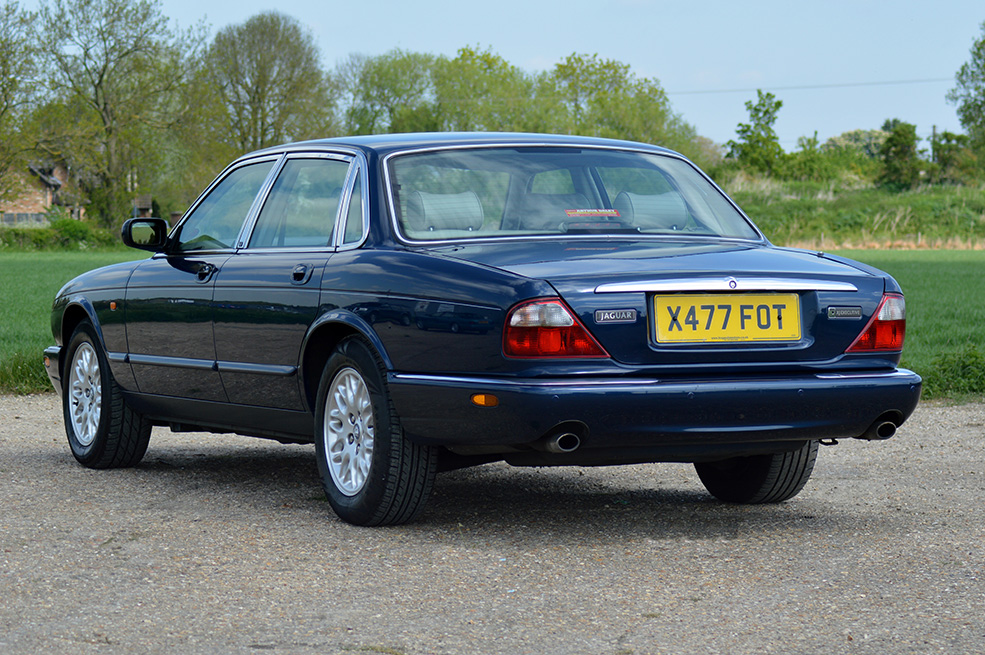
The engine itself was state-of-the-art, weighing in at just 200 kg and offering compact dimensions with a best-in-class specific power output of 72.5 bhp per litre, which beat even BMW at its own game.
The X308 was launched in 1997, with engine options including the entry-level 3.2 V8, the 4-litre V8 and the supercharged 4-litre in the XJR. There was no V12 option, nor was a manual box available.
The X308 was on sale for just four years but was a strong seller – the last XJ to be a real volume seller, with subsequent models moving further upmarket and new additions like the S-Type overlapping the bottom of the range.


Jaguar X350: 2003-2009
The sixth generation of the XJ line was arguably the most radical of the lot, a complete break with tradition. The V8 engines and front-end curves may have been carried over but the aluminium structure of the car itself was a high-tech affair the equal of any other maker.
Interestingly, although aluminium structures were already being used by Audi and Honda, theirs were based on extrusions whereas Jaguar took a different approach with a bonded and riveted construction. Similar to that employed by the aerospace industry and by Lotus for the Elise, this technique allowed the X350 to weigh in at some 40 per cent less than its predecessor.
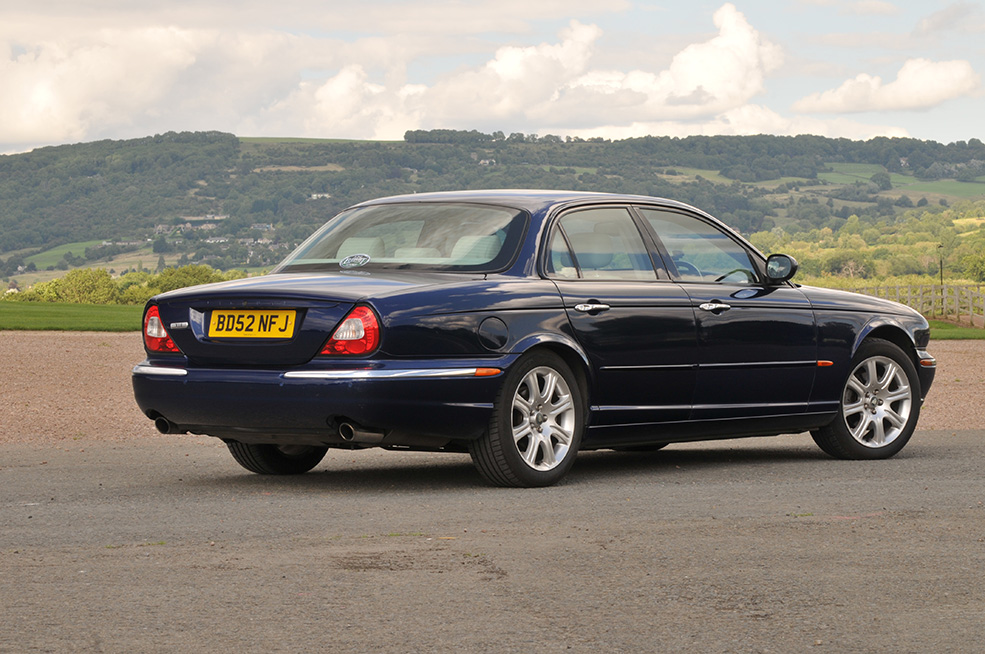
Further embracing the modern world, the X350 was also the first XJ to be offered with diesel power in the shape of the smooth but muscular 2.7-litre V6 which was good for 35 mpg… or three times the economy of an early V12. Petrol alternatives included a Ford-sourced 3-litre V6 plus the 3.5 and 4.2-litre versions of the Jaguar V8 with the supercharged V8 also offered in XJR form.
A facelift in 2007 would add larger bumpers, revised grille treatment and a controversial side air intake vent, with the X350 remaining in production until 2009.
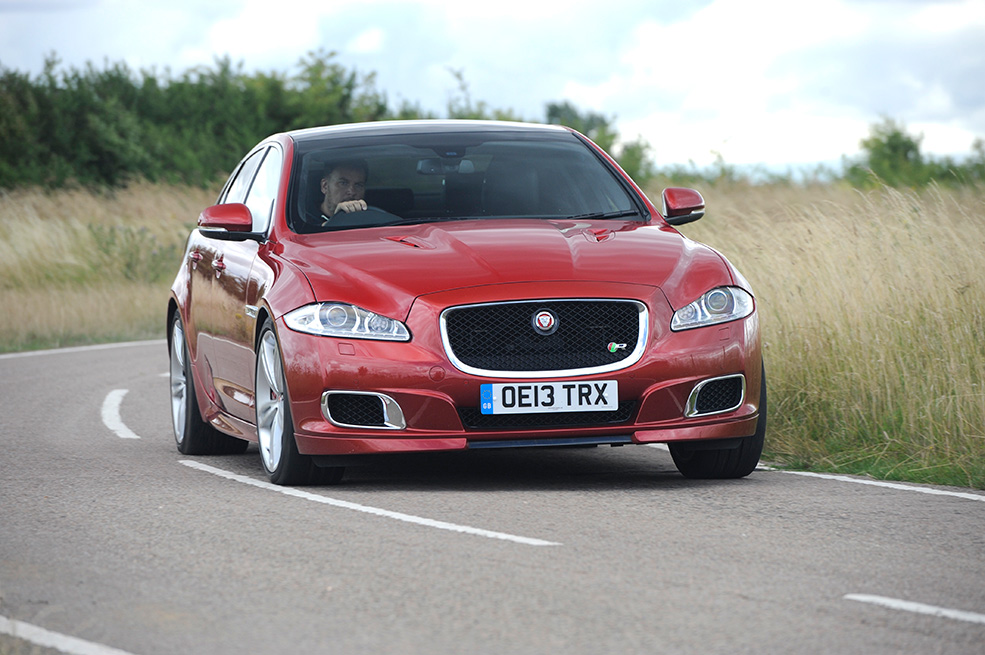

Jaguar X351: 2009 onwards
Its structure may have been state-of-the-art but the X350’s styling was traditional, something which was a double-edged sword for Jaguar, busy trying to woo a more youthful customer base with cars like the XK8 and the X-Type. It may have pleased the Jaguar traditionalists and is a handsome-looking car but appeared conservative in the face of bold new designs like the E65 7-Series penned under new BMW design chief Chris Bangle.
All this changed abruptly with the arrival of the X351, which shared the structure of the X350 but debuted a bold new style. Penned under new Jaguar styling chief Ian Callum, the new car deliberately broke with the ‘series 1’ retro XJ style and adopted a new coupe-like profile which gave it a contemporary appeal. The car also moved upmarket, now competing with cars like the Maserati Quattroporte and Porsche’s Panamera. Despite that, it does retain some traditional XJ design cues such as the front grille which is intended to evoke the series 1 and the clearly defined rear haunches.


